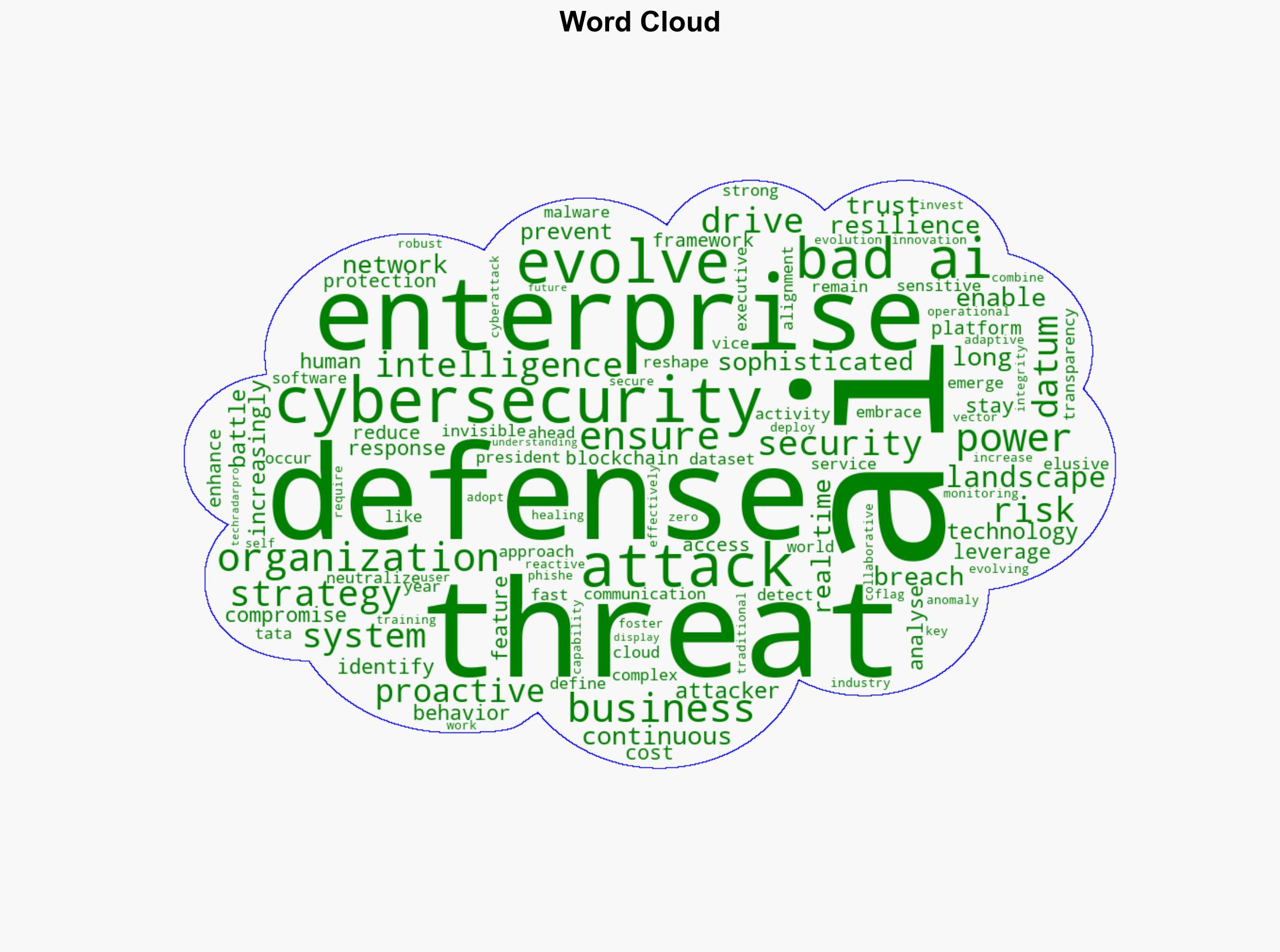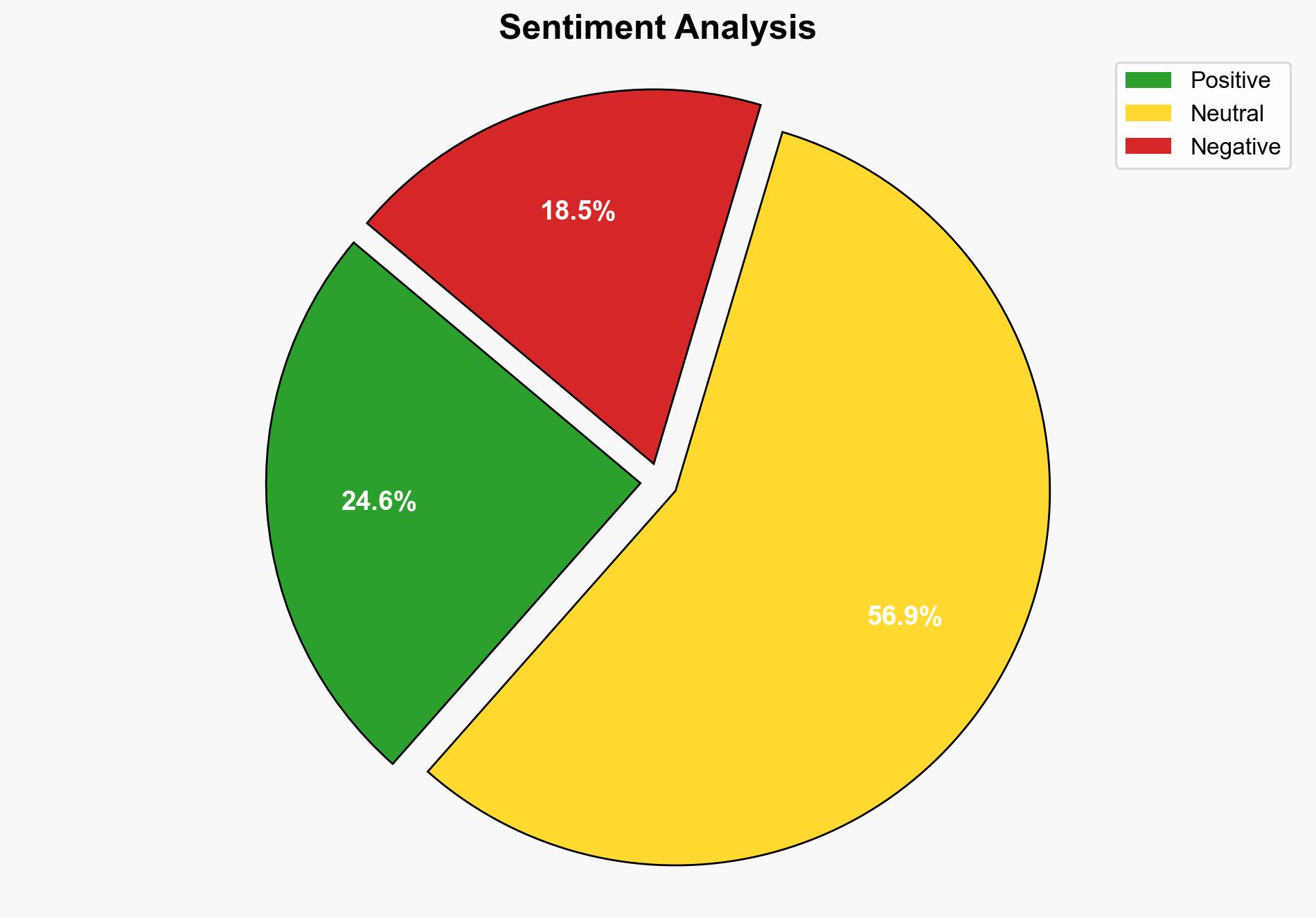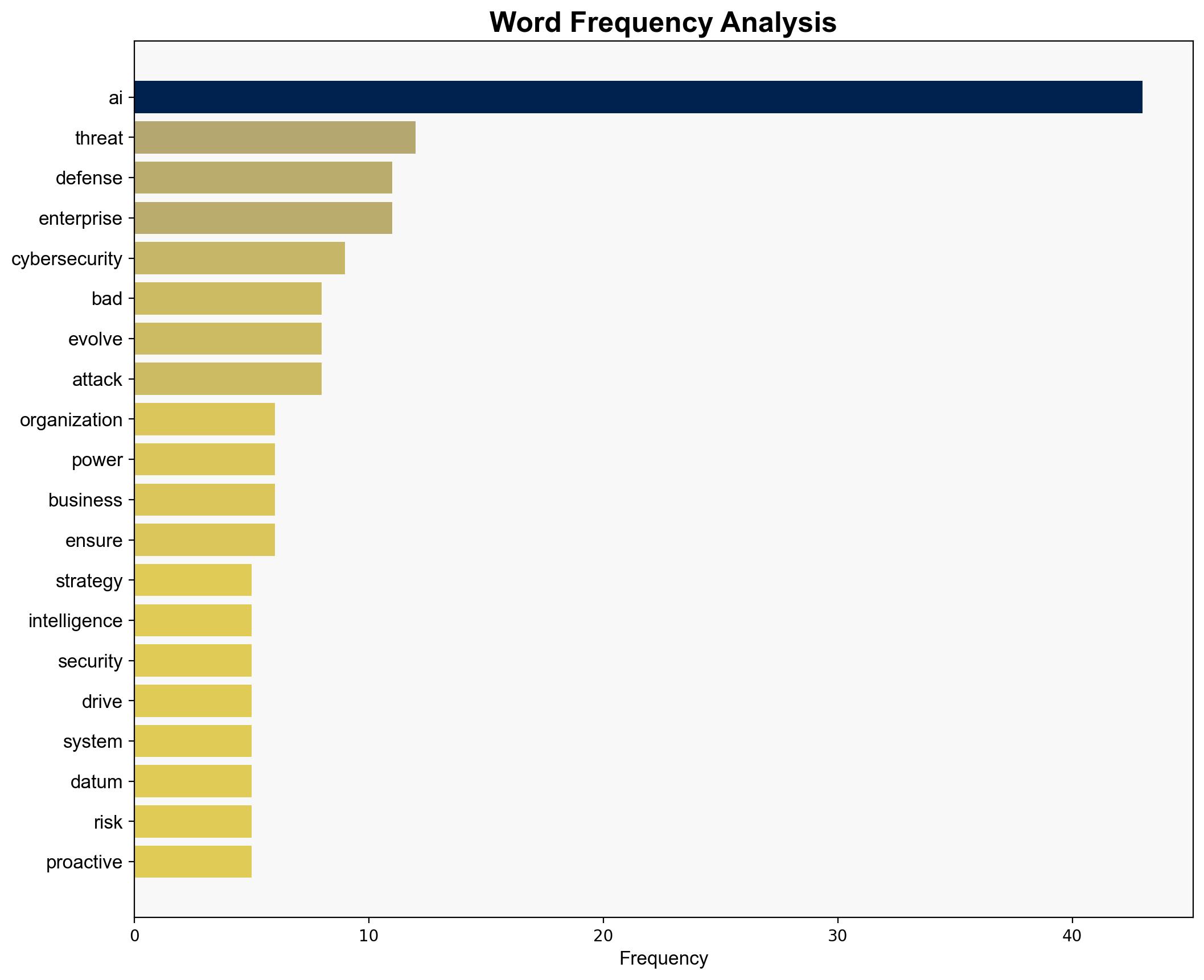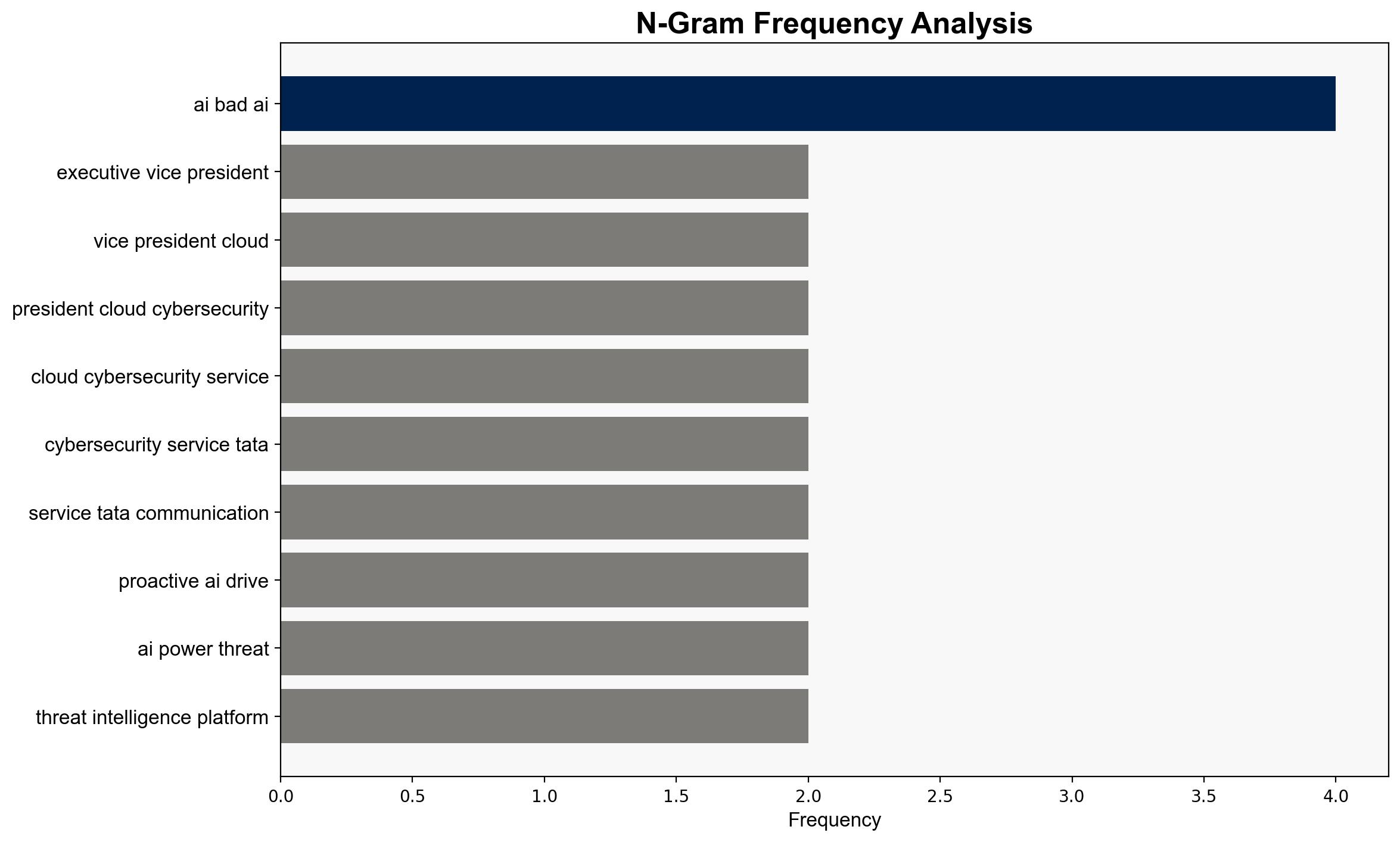The invisible battlefield Good AI vs Bad AI in the evolving cybersecurity landscape – TechRadar
Published on: 2025-08-22
Intelligence Report: The invisible battlefield Good AI vs Bad AI in the evolving cybersecurity landscape – TechRadar
1. BLUF (Bottom Line Up Front)
The evolving landscape of AI in cybersecurity presents a dual-edged challenge where both defensive and offensive capabilities are enhanced. The most supported hypothesis suggests that AI-driven cybersecurity strategies will become essential for enterprises to maintain resilience against increasingly sophisticated threats. Confidence Level: High. Recommended action is for enterprises to invest in AI-powered threat detection and response systems while fostering a culture of continuous adaptation and innovation.
2. Competing Hypotheses
Hypothesis 1: AI will predominantly enhance cybersecurity defenses, enabling enterprises to effectively counteract evolving cyber threats.
– AI systems can analyze vast datasets to detect anomalies and predict attacks, providing a proactive defense.
Hypothesis 2: The weaponization of AI by malicious actors will outpace defensive measures, leading to more frequent and severe cyberattacks.
– Bad AI can create sophisticated attacks that bypass traditional defenses, potentially overwhelming enterprise security systems.
Using Bayesian Scenario Modeling, Hypothesis 1 is better supported due to the increasing investment in AI-driven cybersecurity solutions and the development of predictive threat intelligence platforms.
3. Key Assumptions and Red Flags
Assumptions:
– Enterprises will have the resources and willingness to adopt AI-driven cybersecurity measures.
– AI technology will continue to advance in a manner that supports defensive capabilities.
Red Flags:
– Potential over-reliance on AI without sufficient human oversight.
– The assumption that AI defenses can keep pace with AI-driven attacks may be overly optimistic.
Blind Spots:
– The rapid evolution of AI technology could lead to unforeseen vulnerabilities.
– Lack of consideration for the ethical implications of AI in cybersecurity.
4. Implications and Strategic Risks
The dual use of AI in cybersecurity creates a complex threat landscape where defensive and offensive capabilities are continually evolving. Economic implications include potential financial losses from cyberattacks and the cost of implementing advanced AI systems. Geopolitically, nations may leverage AI for cyber warfare, increasing tensions. Psychologically, the opacity of AI systems could erode trust in digital infrastructure.
5. Recommendations and Outlook
- Enterprises should prioritize investment in AI-powered cybersecurity solutions that offer real-time threat detection and response.
- Develop a zero-trust model enhanced by AI to ensure robust security measures.
- Scenario-based Projections:
- Best Case: AI defenses become highly effective, reducing the frequency and impact of cyberattacks.
- Worst Case: Malicious AI outpaces defenses, leading to widespread data breaches and operational disruptions.
- Most Likely: A continuous arms race between AI-driven defenses and attacks, necessitating ongoing adaptation and innovation.
6. Key Individuals and Entities
– Tata Communications (mentioned as a key player in AI-driven cybersecurity services)
7. Thematic Tags
national security threats, cybersecurity, counter-terrorism, regional focus





